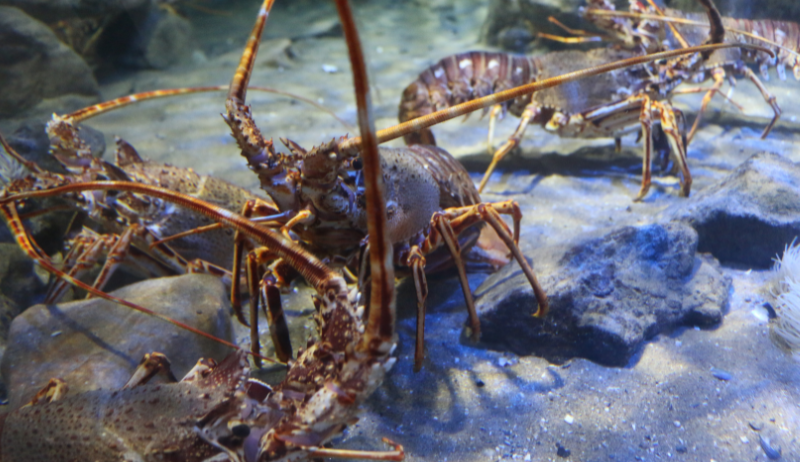Understanding Indonesian Lobster Species: Complete Guide to Premium Varieties
January 19, 2025

Understanding Indonesian Lobster Species: Complete Guide to Premium Varieties
Indonesia rich marine biodiversity makes it one of the world premier sources of premium lobster species. This comprehensive guide explores the distinct varieties of Indonesian lobsters, their unique characteristics, and commercial significance in the global seafood market.
Key Indonesian Lobster Species
1. Spiny Lobster (Panulirus ornatus)
- Commercial Name: Ornate Rock Lobster
- Size Range: 30-45 cm
- Weight: 1-4 kg
- Shell Color: Blue-green with intricate white patterns
- Meat Characteristics:
- Firm, sweet flesh
- High meat-to-shell ratio
- Premium white meat with red highlights
- Prime Harvesting Regions: East Java, Lombok, South Sulawesi
2. Pearl Lobster (Panulirus versicolor)
- Commercial Name: Painted Rock Lobster
- Size Range: 25-35 cm
- Weight: 0.8-2.5 kg
- Shell Color: Green with white stripes and spots
- Meat Characteristics:
- Delicate, sweet flavor
- Medium-firm texture
- Pale pink to white meat
- Prime Harvesting Regions: Bali, Flores, Maluku Islands
3. Sand Lobster (Panulirus homarus)
- Commercial Name: Green Rock Lobster
- Size Range: 20-30 cm
- Weight: 0.6-1.8 kg
- Shell Color: Greenish-brown with yellow spots
- Meat Characteristics:
- Tender texture
- Mild, sweet taste
- Light pink meat
- Prime Harvesting Regions: West Java, Sumatra, Nusa Tenggara
Quality Grades and Market Standards
Premium Grade (Grade A)
- Perfect shell condition
- No missing limbs
- Bright, vivid coloring
- Weight above 800g
- Active movement
- Suitable for high-end restaurants and luxury hotels
Standard Grade (Grade B)
- Minor shell imperfections acceptable
- All limbs present
- Good coloring
- Weight 500-800g
- Active movement
- Popular in seafood restaurants and retail
Processing Grade (Grade C)
- Some shell damage acceptable
- May have missing limbs
- Weight below 500g
- Suitable for processed products
Seasonal Availability and Peak Harvesting Periods
High Season (Best Quality)
- Months: April to June, September to November
- Characteristics: Optimal meat yield, best pricing, maximum availability
Medium Season
- Months: July to August, December to March
- Characteristics: Good availability, competitive pricing, consistent quality
Storage and Handling Requirements
Live Storage
- Temperature: 8-12°C
- Humidity: 85-95%
- Maximum Storage Time: 48-72 hours
- Packaging Requirements: Ventilated containers, moisture-resistant materials, individual compartments for premium specimens
Processing and Transportation
- Initial Processing Temperature: 4°C
- Transportation Temperature: 2-4°C
- Maximum Transit Time: 24-36 hours
- Packaging Specifications: Double-layer insulation, gel ice packs, temperature monitoring devices
Commercial Considerations
Export Documentation
- Required Certificates: Health Certificate, Catch Certificate, Certificate of Origin, HACCP Certification, Marine Stewardship Council (MSC) certification (if applicable)
Pricing Factors
- Species type
- Size/weight
- Season
- Quality grade
- Market demand
- Transportation method
- Volume of order
Value-Added Options
- Live Export: Premium pricing, specialized handling required, limited shelf life
- Processed Products: Whole frozen, tail meat, value-added preparations, extended shelf life
Sustainability and Environmental Considerations
Conservation Measures
- Minimum size requirements
- Seasonal fishing restrictions
- Protected breeding grounds
- Quota systems
Sustainable Practices
- Traditional fishing methods
- Habitat preservation
- Stock monitoring
- Breeding program support
Market Opportunities and Trends
Growing Markets
- Asia Pacific: Japan, Singapore, Hong Kong, South Korea
- Europe: France, Italy, Spain, Belgium
- North America: United States, Canada
Consumer Trends
- Increasing demand for sustainable sources
- Premium live lobster market growth
- Rising popularity in fine dining
- Growing interest in traceable products
Quality Assurance and Safety
Quality Control Points
- Harvesting: Water quality monitoring, proper handling techniques, size verification, health inspection
- Processing: Temperature control, hygiene standards, grading procedures, packaging integrity
- Transportation: Cold chain maintenance, time monitoring, condition verification, documentation accuracy
[Contact our seafood experts now to discuss available lobster stocks and receive personalized quotations for your specific requirements. Our team is ready to assist you with detailed information about current availability, pricing, and import procedures.]
Note: This guide is regularly updated to reflect current market conditions and regulations. For the most recent information and real-time stock availability, please connect with our expert team.

 English
English Chinese
Chinese